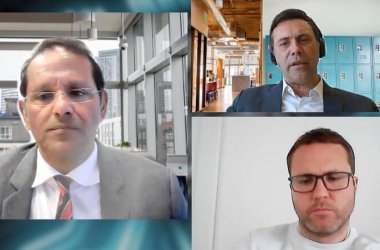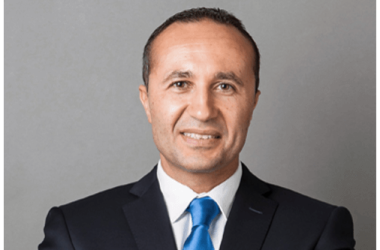 Pat Gelsinger, the driven President and COO of global IT solutions provider EMC, talks about the next steps for the company and for the organisations of the world in the move to achieve higher efficiencies with every investment dollar.
Pat Gelsinger, the driven President and COO of global IT solutions provider EMC, talks about the next steps for the company and for the organisations of the world in the move to achieve higher efficiencies with every investment dollar.
You called EMC the smallest of the big in the IT industry. As you aim to become the biggest of the big, how are you working to differentiate yourself?
A: We are the smallest of the big, and so we have to be nimble and disruptive. We can‘t lead by size because we are not the biggest, so we have to lead by value and innovation. Look at products like VMWare, when we acquired it. It was a very disruptive product – to the value proposition of the data centre and servers at the time. You look at products like DataDomain – it is re-architecting tape and how backups are done – very disruptive to the current industry. Look at products like Greenplum, it is very disruptive to the database and how data analytics and data warehousing is done. That to us is the key – to be that disruptor – to do fundamental innovation and to aggressively drive it forward into the marketplace. We want to be an innovative trusted partner for our customer. And to us that is the opportunity for fundamental differentiation versus the big of the big today.
Q: What is the next big frontier for EMC?
A: First, there is a lot left to do in our domains. In the cloud we have a long way to go. On trust we think we have a long way to go. And on big data, we are just about started. The first point is that those alone are tens of billions of dollars of business that will be made available to us in the future. When we look beyond that, what’s interesting is that it changes the nature of who our customer is and how we work with our customers. The key customer for EMC in the past was the storage admin – that was the guy we talked to. But the key customer for EMC in the future is the CIO and CEO. Now we are talking about how to transform their business as well as how to transform their infrastructure. So we need to change how we sell, who we sell to, what we sell, as well as who we sell with. Look at our partners in the past versus our partners in the future. We are announcing partnerships with Atos like we did a few weeks ago. We did not even know how to spell SAS – now we are doing a partnership with them in the area of Greenplum and analytics. Before we were irrelevant to SAP, now we have formed a major partnership with them. So it is changing who we sell to, what we sell, how we sell it as well as who we sell with. This is a very transformative phase of the company.
Q: What do you think is the next big disruptive technology of our times?
A: I will say big data, in the sense that we think that big data has barely started. We really do think that this entails 10 or more years of work in front of us. And as I have described the four big IT trends – social, mobile, cloud and big data. Those are the big four trends today, and if I knew what the fifth one was, I would probably go start a company to do that. We are really not sure what it would be.
What we are seeing is that innovations are happening in the mashup of those four. So for us it is all about which of these different factors come into play and how. And in that we think that there will be major disruptions, major new opportunities. Let us take an example, in the combination of cloud and big data for healthcare. We think there is enormous transformation. The healthcare industry is 17% of the US economy, it is 13% of the worldwide economy. So of every dollar, 13 cents are being spent on healthcare. And we see cloud and big data as enabling an entirely new model of evidence-based healthcare, and outcome-based healthcare, with a full corpus of all of the prescribed models of how people have treated that disease, combined with an increasingly personalised view of your data, and having the full synthesis of having your personal health records and all of your data being made available in every health experience. That is a cloud, big data experience which will transform that industry. We can explain this across multiple industries.
As we engage with customers in these industries we expect that one or two of these potential combinations are going to be seeds that lead us to make the next big thing. Four years ago there was no mention of big data, but it came into existence only as we saw the interplay of cloud and social. When you think about Google, Amazon and Facebook – what are they doing – they are doing big data. We didn’t call it big data, we didn’t really think about it as big data, at the time.
So I believe the fifth would emerge from understanding some of the vertical market use cases of cloud and big data.
Q: What does EMC look for in global partnerships? What could be the reasons for ending a partnership?
A: Let us think of the two examples of SAS and SAP. In both cases we find that we are highly complementary. I can go to Jim Goodnight, the CEO and founder of SAS. I can go to Bill McDermott and Jim Schnabe and say hey we have a few little skirmishes of areas that we overlap, but fundamentally we are complementary.
We see that we are complementary, we are growing in the same direction for the future, so we share a vision – and then we have to put tires on the car. We have got to get stuff done – so we need to be able to go and deliver real value – so we need to get very specific. What is going to be the SAS high performance appliance that fits inside a Greenplum array? What is going to be the SAP reference design for virtualised environments? So take it to very tangible things that we can build on our products, and turn on real sales, and get them to our mutual sales teams.
On the other hand, what ends a partnership. Well, we just ended one. Dell. After a very successful decade, they gave us a divorce. We did not ask for a divorce, they gave us a divorce. They took us to divorce court.
Ultimately it was their decision that they wanted the margin of storage as well. It was not our decision – we worked very hard – and I personally worked very hard to find a way to complement them.
As it goes forward, we think that our objective is just to build and expand those partnerships, and they have to be sustainable over the long term. Otherwise it is not worth it. We are in partnership discussions across cloud, big data and trust.
Q: Has entrepreneurship efforts decreased during the recession and what role does EMC Ventures play in keeping such efforts ongoing?
A: We have not seen a slowdown in the amount of venture activity in terms of new companies being formed. There clearly has been a slowdown in terms of IPOs, but in terms of the core innovative companies that are relevant to us, we see a lot in storage, cloud, in big data, also a lot in security.
We call it the golden triangle of innovation. We believe that a sustained model of innovation needs three likes – a corporate like, a venture like and a university like. And a successful company keeps all three of these underway. You have an internal R&D engine for your ideas. You are participating with the venture community – their ideas and which ones are important to be worked on – and also identify the M&A opportunities. And the third is the university community – that is either the source of students or ideas – or it is a source of new start-ups from those.
We formalised EMC Ventures for a defined way to be participating with the venture community. We have also formalised EMC Labs, which we have announced, for how we work with universities. So in the last two years, we have formalised the other two aspects of our triangle, and now engaging across all three of these have become a very big part of my job.
The programmes are global in nature even though in the venture case, it is mostly the U.S. There is some venture activity in Europe and Israel – we are active in those markets – but most of our focus happens to be in the US. There are two reasons for that – it’s our home court and its where most of IT innovation is occurring the whole Silicon Valley phenomena. But our intention is to make those uniformly representative on a global basis.
The university programme is a global programme as well. We will be formalising more of these relationships on a global basis.
Q: The chosen topic of EMC World this time is IT transformation. Can you expand on what we are likely to hear?
A: We have said that the theme is transformation and we have said transform IT, business and transform yourself. For IT, the message is about the cloud, driving IT-as-a-service and the efficiency benefits around it. Business transformation is very much around big data. And then there is transforming yourself.
As we look across that spectrum you will see some new product announcements – we are sort of calling it Mega LaunchII. We have MegaLaunch I – was January a year ago. We are also going to be announcing a number of new programmes – like our Data Scientist programme – what that means for people to become data scientists. How we are going to enable it as a proper discipline – in the future and so you will see things from us in that area.
And then as the staple of EMC World – it is about the detailed training and the specifics that we provide our customers and global partners.
Q: You mentioned earlier that EMC is 86% done with its journey to the cloud and providing IT as a service. How do you get to 100% at all and what is the timeline?
A: We have a major systems upgrade coming in the middle of this year. We are doing a major refresh of our ERP environment and our manufacturing supply chain management etc. When we finish that we will be in the 90s. And then we are also delivering many of the IT-as-a-service mechanisms in the second half of this year and the first half of next year. One of those is lab as a service so my engineering groups will give up control of their own labs and they will get it as a shared service across all of the labs.
Lab as a service is one of our initiatives. There are others such as BI-as-a-service, or finance-as-a-service – we are establishing these service models for our internal disciplines and our internal infrastructure in that process. So we will be in the 90s by the middle of this year – in terms of percentage virtualised. And then its going to be a year and a half more until we have delivered all of the mechanism for these as a service total operations. So by the end of next year we feel we are going to be most of the way there.
I don’t think this is ever finished with. You climb, you get over the station and you see some of the next things that you have to go do. But we have a pretty clear path of the major things that we are doing by the end of next year – to deliver hundred percent virtualised and IT-as-a-service mechanisms across the major disciplines of EMC.
Q: How can emerging regions like the Middle East leapfrog to the next stage, and avoid making the same mistakes as their developed peers?
A: I think that is the right way for the Middle East to think about these environments. It is to really leapfrog. You have never needed to build a copper telephone network after you had a wireless phone. You just leapfrog that entire generation and all the capital expenses associated with it. That is very much saying every dollar should be a cloud dollar – and if it is not a cloud dollar, it is not your best investment.
Instead of building traditional databases and data warehouses, they have to be big data environments, and if they are truly not scaleable at that level, it is not the best investment that you could be making.
So organisations need to heavily bias the investment/strategy towards these key trends so that they are not investing to catch up, they are truly investing to leapfrog. As we see regions do that, it really does provide them the opportunity to close the gap. There is a meaningful gap – here is the state of the art cloud and here is where mature market telcos are and here is where emerging market telcos are. And that gap was measured in years – at this point.
And our goal would be that the big data space that tthat gap is measured in months instead of years – so there really is this opportunity to very quickly come alongside and put these latest mechanisms in place – never meaning to make capital costs in existing environments and being able to take full advantage of the most modern tools as they emerge today.





